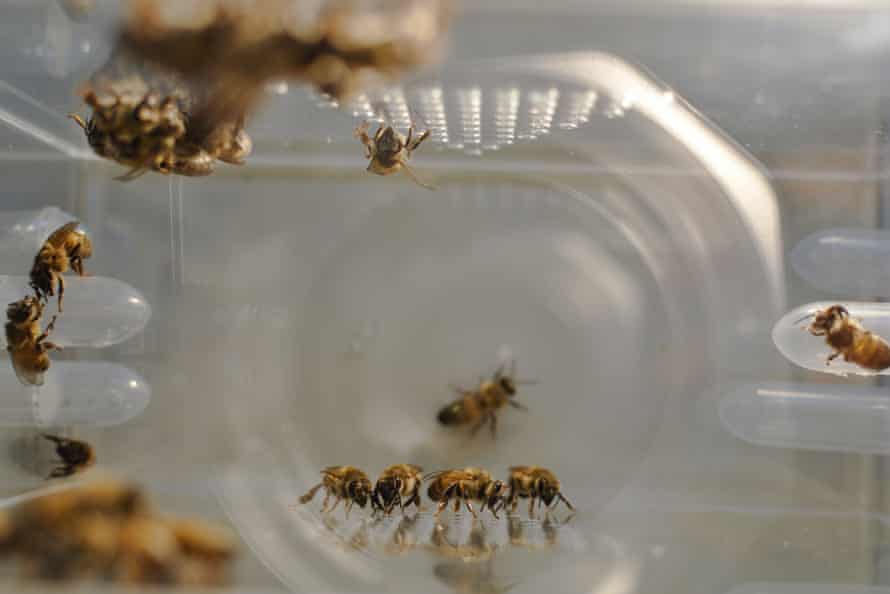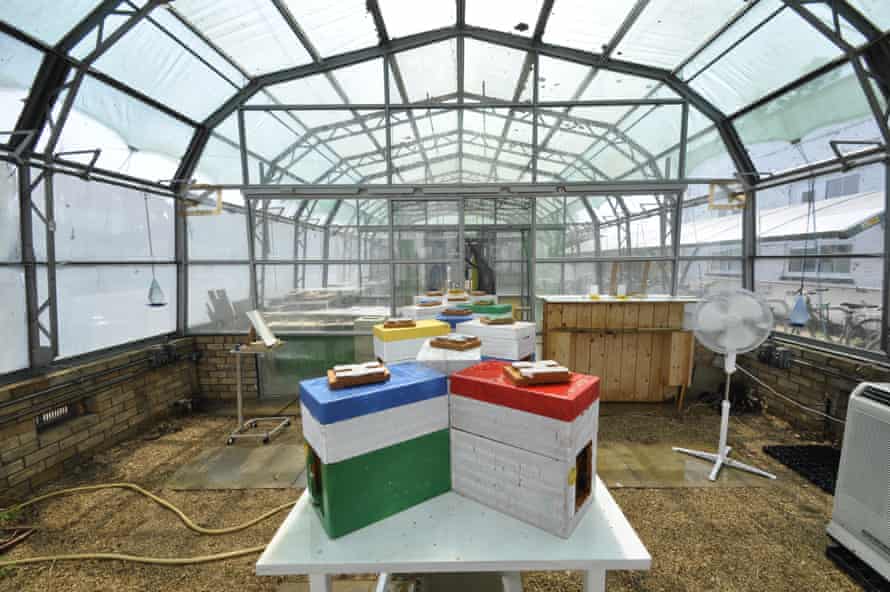When beekeepers from across the US drive tens of millions of hives on vans to pollinate California’s almond crops in January, there basically isn’t adequate foods for them to eat right up until the million-as well as acres of almond trees commence to bloom in early spring.
California’s booming almond industry has developed a extensive monoculture, with little all-natural forage. The honeybees have to have to be in location to elevate their broods prior to the pollen comes into period, forcing beekeepers to use pollen patty substitutes to keep them alive.
Just after researching the honeybees used to pollinate almond trees for lots of several years, Prof Geraldine Wright, a biologist at the University of Oxford, realised that unless of course this pollen substitute was really customized to the precise dietary needs of a honeybee colony, colonies can are unsuccessful altogether.
“Nobody experienced accomplished a actually cautious study of bee diet and the traits of pollen,” says Wright, who has invested the earlier ten years engineering a new bee foodstuff dependent on her expertise of the intricacies of the honeybee diet regime.
As pollinators, honeybees are fundamental to food methods and are regarded a domesticated species. In that vein, Wright says they need their very own bespoke feed.
Right until now, pollen substitutes have been “a small substandard”, consisting of a mix of flour, sugar and body fat that “looks like gloopy cookie dough”, Wright suggests. Livestock feed businesses haven’t invested greatly in producing the ideal bee meals, probably simply because honeybees are compact and only signify a portion of the market share in contrast with cows, pigs and sheep.

Domesticated honeybees encounter equivalent problems to any farmed animals, such as disease, but this is compounded by threats this sort of as pesticide use, the local weather disaster and loss of habitat. Far more than 1-fifth of colonies ended up shed over the winter season of 2019–2020 thanks to a range of aspects, which include pathogens, pesticides and poor diet.
In the subject, honeybees gather nectar that is reworked into honey and pollen which they transform into bee bread (a combination of plant pollen and honey) that can be saved in the hive for later on use. But with decreasing all-natural forage accessible, beekeepers test to retain their colonies applying foods that depend fewer on the landscape. Beekeepers can use a pollen substitute, test to uncover some other pure forage for their bees or purchase honeybee-gathered pollen from overseas – but that can vector condition.
When you are seeking to cultivate an animal, Wright claims, you want to supply it with an exceptional food items resource: “In the springtime it may be less complicated for honeybees to collect loads of different varieties of pollen so they almost certainly get a good adequate blend of nutrition, but in the autumn the food items is significantly much more confined to distinct bouquets and there’s much less of it so the colony has to adapt to the modifying dietary landscape.”
In her research lab, Wright rears hundreds of employee bees from Might by way of to September. Four big incubators just about every comprise 100 Perspex boxes with standardised conditions. In every box, 40 employee bees of the very same age are given distinctive excess fat-protein combinations to feed on. That is weighed regularly to monitor which foods choices they decide on. Wright assesses how prolonged they survive to calculate the optimum combos of nutrients and refine her recipe for the pollen substitute.

Whilst employee bees favour carbohydrates to gas their flight, nurse bees will need much more excess fat and protein to make the royal jelly and feed the larvae. The extent to which honeybees may well go out of harmony when their diet program variations intrigues Wright, so she’s also learning mini honeybee colonies within just an enclosed glass property to assess how various foods have an impact on brood output.
Bee diet is elaborate and dynamic. Wright says that nutritional desires may possibly rely on the time of calendar year or geographical space. “We’re seeking at how seasonal variations in bee food items could alter the biology of the full colony, moreover we’re learning bees from across Europe and the US to take a look at how area flora affects their nutrition,” she suggests.
Josette Lewis, chief scientific officer for the Almond Board of California, suggests nutritional supplements are “particularly crucial in the course of the winter months when there is minimal pollen readily available in the landscape”, but that farmers are doing work to “improve bee nutrition by planting on-farm pollinator habitat”.
As nicely as a supplementary feed for bees, Wright’s workforce are creating a honey substitute. “Honey is a useful crop, specially in the Uk and Europe, but when beekeepers consider honey from the bees in the summertime to offer, the bees will need to be offered an added sugary meals resource.” She says that the bees put a great deal of “the very good stuff” into the nutrient-dense honey them selves, so when honey is harvested, beekeepers are eradicating a dietary resource from the hive.
“If we can generate a food items for the bees that is important but much less high priced than honey, then it gets to be economically sensible to do that,” says Wright.

Chris Hiatt, vice-president of the American Honey Producers Affiliation, welcomes Wright’s revolutionary bee foodstuff, declaring it is critical for retaining bees healthful and lessening losses to ailment. “If we didn’t feed 5–10 lbs of pollen each and every winter, we would get rid of extra than the 40% national regular we do now.”
At the time she will get investment, Wright’s new bee foods will be marketed to beekeepers about the entire world. Although farmers in some regions may have plentiful pollen, opportunity marketplaces include things like Australia, as nicely as parts farming cranberries and blueberries in North The united states.
Indicator up for the Animals farmed regular update to get a roundup of the most effective farming and foods tales across the entire world and preserve up with our investigations. You can ship us your stories and thoughts at [email protected]





More Stories
The 10 Best Low-Carb Snacks That Will Fill You Up
Bonner County Daily Bee
With Far more Vaccine Doses Coming, California Counties Scramble To Make Distribution Programs